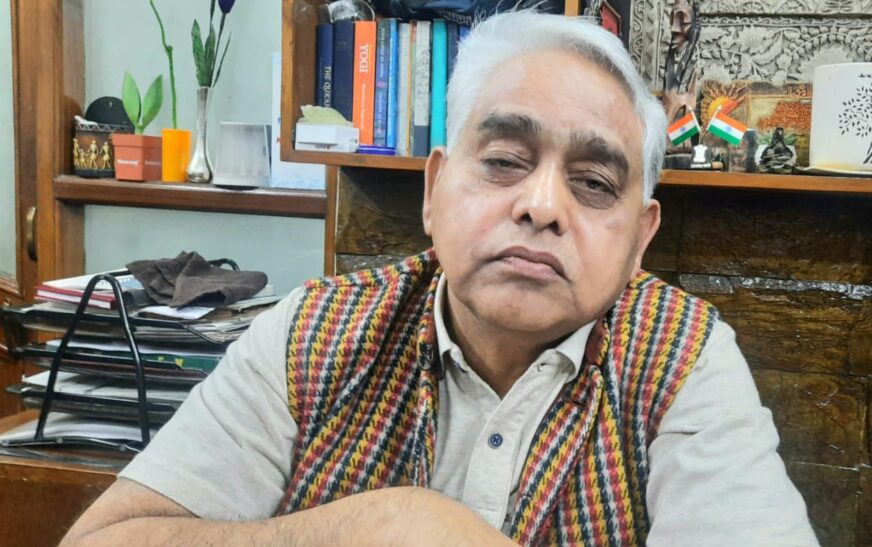Dr. Ravindra Kumar, a seasoned medical professional with over four decades of dedicated service to the community, graduated from GSVM Medical College, Kanpur, in 1979 with an MBBS degree. Commencing his practice in Bulandshahar, Uttar Pradesh, in 1980, Dr. Kumar has been a stalwart in the medical field.
In 1985, he initiated the IMA Chapter in Noida, assuming pivotal roles such as General Secretary and Vice President over the years. Notably, during his tenure, Dr. Kumar actively engaged with underprivileged communities in Noida, providing medical assistance without any financial burden on the recipients. His charitable endeavors in Noida and its vicinity stand testament to his profound generosity and commitment to humanitarian causes.
Engaging in a candid conversation with The Interview World, Dr. Ravindra Kumar delves into the repercussions of waterborne diseases in India. He emphasizes the critical importance of ensuring access to clean drinking water for every citizen. The following excerpts from the interview shed light on his insights and perspectives on this pressing issue.
Q: Why is India prone to waterborne diseases?
A: India, with its diverse geography and climatic conditions, faces significant challenges in ensuring access to safe and clean drinking water for its vast population. Waterborne diseases, resulting from the consumption of contaminated water, remain a persistent threat to public health in the country.
Waterborne diseases are widespread in India, affecting millions of people annually. According to the World Health Organization (WHO), a significant proportion of the country’s population lacks access to safe drinking water. This contributes to the high incidence of waterborne diseases.
Certain regions in India face a higher burden of waterborne diseases due to inadequate sanitation facilities, poor water quality, and limited access to healthcare. Rural areas, in particular, often bear the brunt of these diseases.
Approximately 50% of diseases are waterborne, yet this concerning statistic has persisted for decades. The water we receive gets contaminated with fecal material, giving rise to waterborne illnesses such as cholera, typhoid, dysentery, and gastroenteritis, posing a significant threat to public health. These diseases can result in severe illness, hospitalization, and, in some instances, fatalities.
Particularly vulnerable to the adverse effects of waterborne diseases are children, the elderly, and individuals with compromised immune systems. The impact is further compounded by malnutrition and pre-existing health conditions.
The economic ramifications of waterborne diseases are substantial, encompassing healthcare costs, lost productivity, and strain on the healthcare system. Poor health not only diminishes workforce productivity but also contributes to increased healthcare expenditures.
Remarkably, 50% of patients in outpatient departments seek treatment for waterborne diseases. The financial toll of medicines and treatments for these illnesses is estimated to be around $2.2 billion.
When labor forces are afflicted by waterborne diseases, they often take medical leave, significantly impacting productivity. Reducing the prevalence of these diseases among the labor class can potentially halve medical leaves, leading to improved productivity and a subsequent boost in the GDP.
Furthermore, waterborne diseases contribute to the anemia profile of Indians. Anemia, a complex issue with multiple causes, is fueled by micronutrient deficiencies, intestinal infections from parasites and bacteria, malaria, and genetic hemoglobin disorders. Approximately 55% of women across all economic strata suffer from anemia, and children also endure chronic anemia based on their economic conditions.
Q: What remedy do you suggest to alleviate this condition?
A: The issue at hand extends beyond individual countries like India, Bangladesh, Pakistan, Afghanistan, or various African nations; many third-world countries face this common challenge. This predicament is not unique to specific regions, but several nations are grappling with similar circumstances. On the contrary, developed Western countries, including Canada, America, Australia, New Zealand, and EU nations, boast the luxury of readily available pure tap water. In these places, there is no need for boiling or intricate purification processes.
The underlying dilemma lies in the pervasive corruption within our system. A corrupt system inherently fails to deliver clean water to the end consumer. Contrasting this with the United States, where one can confidently turn on any street corner tap and drink the water without hesitation, it is evident that a robust and transparent system is crucial for ensuring access to clean water. To address this issue comprehensively, we must strive to establish a system capable of providing pure drinking water to every household, thereby ensuring a basic yet essential need for all.
Q: How can we create an efficient system in our country to provide clean drinking water?
A: Establishing a proficient system for clean drinking water necessitates a comprehensive strategy that involves cooperation among the government, private sector, and local communities. To guarantee sustainable access to clean water for everyone, it is crucial to address both immediate and enduring challenges.
One key aspect is the implementation of a strong water quality monitoring system that utilizes advanced technology. This system will enable regular assessments of the quality of water sources, encompassing both surface water and groundwater.
In addition, there is a need to invest in and upgrade water treatment plants to ensure they adhere to the required standards for water purification. Furthermore, it is imperative to develop and maintain a dependable and efficient distribution network for the transportation of treated water to communities. This collective approach will contribute to the creation of a resilient and sustainable clean water infrastructure.
Q: Do we need to sensitize the public regarding this?
A: There is a pressing issue that nobody seems to be addressing – the illegal purchase of water by the labor class. This illicit practice involves the unauthorized extraction of groundwater, contributing to the depletion of vital water sources. We must focus on educating communities about the significance of clean water and promoting proper sanitation practices.
If the government ensures the availability of clean drinking water, the necessity for bottled water diminishes. Consider the financial burden on the labor class, who often pay exorbitant amounts for drinking water. Even if a bottle costs Rs. 20-30, when multiplied for an entire family on a daily, monthly, and yearly basis, the economic strain becomes evident. Additionally, the environmental impact of plastic wastes is more pressing.
The widespread use of bottled water poses a grave threat, as evident in the pollution of the River Ganga with plastics. The situation is disheartening. Contrast this with the situation in the USA. Since 1995, there has been no recorded typhoid data, indicating effective management. In stark contrast, India continues to grapple with the issue, with no significant improvement.









